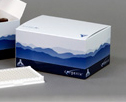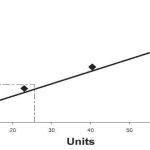
REAADS Anti-Cardiolipin (aCL) IgG
$0.00
REAADS Anti-Cardiolipin (aCL) IgG is an enzyme-linked immunosorbent assay (ELISA) for the semi-quantitative determination of immunoglobulin G (IgG) anti-cardiolipin antibodies (aCL) in human serum of plasma in subjects with system lupus erythematosus (SLE), lupus-like disorders (anti-phospholipid syndrome) and other auto-immune diseases. Anti-cardiolipin antibodies are associated with arterial and venous thrombosis, thrombocytopenia and recurrent fetal loss. Presented in automation friendly format (30’ – 30’ – 30’).
What is the clinical significance when samples test positive for the anti-cardiolipin antibodies and are negative for anti-b2GPI?
The aCL assay can detect antibodies of differing specificities. This includes antibodies specific for the cardiolipin molecule itself, and antibodies that are directed against either a cofactor molecule such as b2GPI, or a special binding site created by the interaction of a cofactor with CL. Antibodies directed against CL may be associated with infectious disease, or may be specific for a different cofactor, such as prothrombin. The clinical significance of these antibodies must be assessed in conjunction with the patient’s symptoms, clinical history, and other laboratory findings. Follow-up testing of these patients is recommended in 3-6 months to confirm reactivity. Only b2GPI cofactor dependent antibodies react in the anti-b2GPI assay; these antibodies show a higher correlation with thrombosis and are more specific for the antiphospholipid syndrome.
What are some features of the REAADS anti-Cardiolipin test? The b2GPI test?
The REAADS anti-Cardiolipin test kit and the b2GPI kit are reagent-complete kits. The anti-cardiolipin kit features specific determination of IgG, IgM, and IgA aCL antibodies. The kits are convenient, cost-effective ELISA procedures which give objective, accurate, and reproducible results with short incubations at room temperature.
How does a syphilis infection affect the REAADS anti-cardiolipin test?
Patients with current or prior syphilis infections may have a positive result without increased risk of thrombosis. Anti-cardiolipin antibodies can appear transiently at low levels during many infections. If a patient first tests positive while there are clinical signs of infection, the test should be repeated after an interval of six months.
Summarize the IgG/IgM and IgA REAADS anti-cardiolipin test. What is the normal range?
The test is an indirect ELISA. Diluted serum samples, calibrator sera, and controls are incubated in cardiolipin coated microwells, allowing aCL antibodies present in the samples to react with the immobilized antigen. After their removal of unbound serum proteins by washing, antibodies specific for human IgG, IgM, or IgA labeled with HRP are added forming complexes with the CL bound antibodies. Following another washing step, the bound enzyme-antibody conjugate is assayed by the addition of TMB and H2O2 as the chromogenic substrate. Color develops in the wells at an intensity proportional to the serum concentration of aCL antibodies. The OD is read at 450 nm.
Normal ranges are less than 23 GPL (IgG per liter), less than 11 MPL (IgM per liter), and 22 APL (IgA per liter).
Assay Procedure
- The assay can be performed with a single point calibration (Calibrator 2) or a four-point calibration curve (Calibrator 1, 2, and 3 plus sample diluent/reagent blank as Calibrator 4 equal to 0 APL units). One well should also be run as a reagent blank control with the single point and multipoint calibration method. Sample Diluent without serum is added to the well. This well will be treated the same as sample wells in subsequent assay steps
- Remove any microwell strips that will not be used from the frame and store them in the bag provided.
- Prepare a 1:50 dilution of the calibrator, controls, and patient samples in Sample Diluent (green solution); e.g., 10μl sample added to 490μl Sample Diluent equals a 1:50 sample dilution.
- Add 100μl of diluted calibrators (including the reagent blank/Calibrator 4), controls, and patient samples to the appropriate microwells.
- Incubate 15 minutes at room temperature. After the incubation is complete, carefully invert the microwells and empty the sample fluid. Do not allow samples to contaminate other microwells.
- Wash 5 times with PBS. Each well should be filled with PBS per wash. Invert microwells between each wash to empty fluid. Use a snapping motion of the wrist to shake the liquid from the wells. The frame must be squeezed at the center on the top and bottom to retain microwell modules during washing. Blot on absorbent paper to remove residual wash fluid. Do not allow wells to dry out between steps.
- Add 100μl anti-human IgA HRP-Conjugated Antibody Solution (orange) to the wells corresponding to the IgA calibrator, controls, reagent blank, and patient samples.
- Incubate for 15 minutes at room temperature. After the incubation is complete, carefully invert the microwells and empty the conjugate solution.
- Wash 5 times with PBS as in step 7. Use a snapping motion to drain the liquid and blot on absorbent paper after the final wash. Do not allow the wells to dry out.
- Add 100μl One Component Substrate to each well and incubate for 10 minutes at room temperature. Add substrate to the wells at a steady rate. Blue color will develop in wells with positive samples.
- Add 100μl Stopping Solution (0.36 N sulfuric acid) to each well to stop the enzyme reaction. Be sure to add Stopping Solution to the wells in the same order and at the same rate as Substrate was added. Blue Substrate Solution will turn yellow and colorless solution will remain colorless. Blank or zero the plate reader against an air or a water blank well. Read the O.D. of each well at 450nm. The O.D. values should be measured within 5 minutes of the addition of Stopping Solution.
Results
Single Point Calibration
- Calculate the mean O.D. values if duplicates of Calibrator 2, controls, and patient samples were performed.
- Divide the concentration value of Calibrator 2 (printed on the vial label) by the O.D. or mean O.D. value of the calibrator serum to obtain the conversion factor.
- Multiply the O.D. or mean O.D. value for each of the controls and patient samples by the conversion factor to obtain a concentration value in APL units.
| Conversion Factor = IgA anti-cardiolipin concentration of Calibrator 2 (APL) Absorbance value of the Calibrator 2 (O.D.) IgA anti-cardiolipin concentration of sample = |
- The conversion factor must be calculated for each assay run. Using a conversion factor from another assay will invalidate the results.
Multi-Point Curve Calibration
- Calculate the mean O.D. values if duplicates of the calibrators, controls and patient samples were performed.
- Perform linear regression or quadratic/2nd order polynomial regression analysis with the four calibrator values against the mean O.D.s for each calibrator. (See vial labels for APL units. Calibrator 4 [sample diluent] is equal to 0 APL units)
- The calibrator curve can be plotted either automatically using a validated software program or manually with graph paper. It is recommended to use a zero intercept when generating the regression line to avoid negative values. If this option is not available, any negative values should be reported as zero units. When generating the curve manually, draw a best fit line through the plotted points using a zero intercept.
- Determine the control and patient sample values from the calibrator curve.
- Example of a multi-point curve calibration.
Multi-Point Calibration Curve
See Graph
Using the example calibration curve provided, a specimen O.D. of 1.000 at 450nm would correspond to a calculated value of 26.2 units. The calibration curve provided is an example only and should not be used to calculate patient results. A new calibration curve should be performed with every test run.
Protocol Summary
- Add 100µl of calibrator, controls and samples to microwells
- Incubate at room temperature for 15 minutes
- Decant contents
- Wash 5 times with PBS
- Add 100µl of conjugate to each well except the water blank
- Incubate at room temperature for 15 minutes
- Decant contents
- Wash 5 times
- Add 100µl of substrate to each well except the water blank
- Incubate at room temperature for 10 minutes
- Add 100µl of stop solution to each well except the water blank
- Add 200µl of distilled or deionized water to the water blank well
- Read the O.D of each well at 450nm against a 650nm reference filter (if available) within 30 minutes
